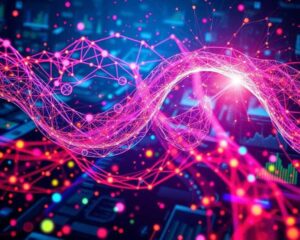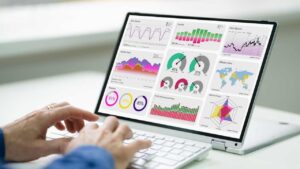
How ChatGPT is Revolutionizing Data Analysis | Learn: Conditional Formatting with Formulas
Introduction to ChatGPT
ChatGPT is an artificial intelligence system developed by Anthropic, an AI safety startup founded in 2021. It is built on a large language model architecture similar to GPT-3, created by OpenAI.
ChatGPT was released to the public in November 2022. It quickly gained popularity for its ability to generate human-like conversational responses on a wide range of topics.
Unlike previous chatbots, ChatGPT does not rely on predefined scripts or rules. Instead, it is trained on vast amounts of text data from the internet to learn how to converse naturally. This training enables ChatGPT to answer follow-up questions, admit mistakes, challenge incorrect premises, and reject inappropriate requests.
Key capabilities of ChatGPT include:
- Conversing in a natural, contextual manner across many topics
- Answering follow-up questions and gracefully handling clarifications
- Providing expository explanations of concepts
- Summarizing long passages of text
- Translating text between languages
- Completing tasks like coding, essay writing, and solving math word problems
While impressive, ChatGPT does have limitations which will be explored later in this piece. But as a showcase for advanced natural language processing, it represents a significant leap towards more human-like AI.
Advanced Natural Language Processing
ChatGPT displays advanced capabilities in natural language processing that allow it to understand context, intent, and meaning behind human prompts. This is enabled by its deep learning neural networks and massive training datasets.
Specifically, ChatGPT leverages transformer models like GPT-3 that are trained on enormous text corpuses to develop a sophisticated understanding of language. The system can analyze textual relationships within sentences, paragraphs, and documents to grasp context and nuance.
ChatGPT also maintains an extensive knowledge base gathered from millions of websites, books, and text documents. This allows the AI to tap into a broad collection of facts, concepts, and associations when interpreting language. It can link new conversations to previous knowledge, enabling more human-like dialogue.
Additionally, ChatGPT continually updates its language model through machine learning techniques. By recognizing patterns in huge volumes of text data, the system develops an intuitive sense of semantics, sentiment, intent, and meaning. This empowers more natural conversational abilities.
The advanced natural language processing capabilities of ChatGPT allow it to parse complex human prompts, understand intent and context, and respond with remarkably human-like dialogue. Its massive neural networks, knowledge base, and machine learning workflows enable more meaningful conversational AI interactions.
Generating Human-like Responses
ChatGPT has demonstrated an impressive ability to generate human-like conversational responses. Unlike traditional chatbots that follow rigid scripts, ChatGPT uses advanced natural language processing to understand contextual nuances and respond appropriately.
Some key aspects that make ChatGPT’s responses seem human-like include:
- Personality and tone – ChatGPT can adopt different personalities and speaking styles, allowing it to match the tone of the conversation. It sounds natural and doesn’t speak in a robotic monotone.
- Contextual awareness – ChatGPT keeps track of the context and history of a conversation. It will remember what was discussed previously and refer back to earlier parts of the dialog.
- Humor and empathy – Within certain limits, ChatGPT attempts humor and displays empathy at appropriate times during a conversation. This emotional range makes interactions more natural.
- Admitting knowledge gaps – When asked a question it doesn’t know the answer to, ChatGPT will admit its limitations rather than try to fake a response. This builds trust with users.
- Conversational flow – ChatGPT manages conversational flow and turn-taking very well. It asks clarifying questions rather than getting stuck. The dialogue feels fluid.
- Grammatical correctness – Responses are free of grammatical errors and easy to understand, with proper sentence structure.
While not mistake-proof, ChatGPT has communication abilities that rival those of humans in certain contexts. Its advanced language modeling helps facilitate interactions that feel much more human than machine.
Read More Articles
- How to Apply Conditional Formatting with Formulas
- How to Use XLOOKUP in Excel Step by Step Tutorial
- How to Convert Excel to PDF Easily
Limits of ChatGPT
While ChatGPT shows promise for advanced natural language processing, it also has significant limitations users should keep in mind. Most notably, ChatGPT can demonstrate factual inaccuracies, hallucination, and offer misleading or harmful responses.
ChatGPT does not actually have real world knowledge or experiences to draw from. The model is limited to the text contained in its training data from 2021 and earlier. This can lead to responses that seem highly coherent and accurate but are fabricated. Researchers have found ChatGPT will confidently provide wrong answers to certain questions. It struggles with complex reasoning that requires true understanding beyond pattern recognition.
The AI also suffers from a problem known as hallucination. When prompted with questions beyond its knowledge, ChatGPT attempts to provide plausible-sounding but completely made up responses. This imaginary information can appear convincing but lead users astray. ChatGPT will even argue with users insisting on its false information, a sign it lacks a clear sense of the limits of its knowledge.
Given these flaws, users should maintain skepticism about ChatGPT’s responses, double check facts, and not rely upon it alone for key decisions or sensitive topics. While a powerful language model, it lacks robust mechanisms for distinguishing truth from fiction. Further development is required before ChatGPT can become a fully reliable and accountable source of knowledge. For now it should be used more as an aid for generating ideas rather than as an oracle for definitive answers.
Analyzing Complex Datasets
One of the most impressive capabilities of ChatGPT is its ability to analyze complex datasets and draw meaningful insights from them. While most chatbots can only respond to simple queries, ChatGPT has shown proficiency in digesting large amounts of data, identifying patterns and relationships within it, and producing thoughtful summaries and visualizations.
Several factors enable ChatGPT to carry out advanced analysis on big datasets:
- Powerful neural networks – The natural language model behind ChatGPT contains over 175 billion parameters, allowing it to recognize intricate correlations in data. This neural network was trained on massive datasets, giving ChatGPT broad knowledge to draw from.
- Data comprehension – During training, ChatGPT was given many examples of datasets and analysis results. This enables it to deeply understand tabular data, time series, graphs, and various data formats. ChatGPT can parse datasets, clean and normalize data, and extract key parameters.
- Multi-step reasoning – Unlike most AI systems that carry out one task, ChatGPT can take a high-level goal and break it down into logical steps. For example, given a dataset, ChatGPT can clean it, run statistical tests, visualize findings, and generate a summary report. This ability to plan and reason sets it apart.
- Generative capabilities – ChatGPT does not just analyze data – it can also generate insights, conclusions, and data visualizations from its analysis. This includes creating graphs, summary statistics, and highlights from the dataset. The generative nature of ChatGPT allows richer analytics.
While ChatGPT does have limits in advanced analytics, its abilities represent a big leap forward in multi-domain data comprehension. As conversational AI continues progressing, systems like ChatGPT could automate a wide range of analytical workflows, providing a powerful tool for data workers.
Read More Articles
- How to Apply Conditional Formatting with Formulas
- How to Use XLOOKUP in Excel Step by Step Tutorial
- How to Convert Excel to PDF Easily
Identifying Patterns and Relationships
One of the most powerful capabilities of ChatGPT is its ability to analyze datasets and identify hidden patterns and relationships within the data. As an AI system trained on massive amounts of text and data, ChatGPT contains advanced pattern recognition abilities to uncover insights that would be difficult or impossible for humans to detect.
Specifically, ChatGPT employs techniques like statistical analysis, correlation mapping, clustering algorithms and neural networks to find meaningful connections in data. For example, when given a dataset of customer information, ChatGPT can segment customers into groups based on common attributes like demographics, interests, and purchasing behavior. It can also detect which product features have the highest correlation with increased sales.
ChatGPT is adept at discovering categories and taxonomies within unstructured text data. This allows it to classify documents, customer feedback, social media posts and more into logical groupings. The system can also identify anomalies and outliers that fall outside normal patterns in the data.
By revealing these kinds of non-obvious insights, ChatGPT augments and enhances human analysis. Data scientists and analysts can leverage its pattern recognition capabilities to gain a deeper understanding of complex datasets. This enables them to build better predictive models, identify problems areas, and recommend more targeted actions.
While ChatGPT has impressive built-in analytics skills, it does require clear direction and guidance to focus its analysis. Asking the right questions is key to extracting maximal value from its advanced pattern detection abilities. Overall, ChatGPT represents an exciting new frontier in using AI to automate and elevate data analysis work.
Generating Data Visualizations
One of the most useful applications of ChatGPT is its ability to analyze datasets and automatically generate relevant data visualizations. While it cannot perform complex statistical analysis, ChatGPT excels at scanning data and identifying trends, patterns, and relationships that can be clearly conveyed through charts, graphs, and diagrams.
For example, if given a dataset containing sales figures over time, ChatGPT can determine if the data shows a rising or falling trend. It can then recommend and generate an appropriate line chart illustrating the trend. For a dataset with multiple categories and values, ChatGPT may propose a column chart or bar graph to compare the variables side-by-side.
Beyond simple charts, ChatGPT can also produce more advanced visualizations like heat maps, pie charts, scatter plots, and geographic maps. The key is providing the model with well-structured, clean data. Based on the data format and contents, ChatGPT will automatically select the most fitting visualization types to create.
With the ability to instantly generate data visualizations, ChatGPT can serve as a useful tool for quickly exploring trends and communicating insights from data analysis. While it does not replace the need for thoughtful data visualization design, ChatGPT provides a convenient starting point that can accelerate the process. Users can then refine and polish the automatically generated charts and graphs to meet their needs.
For many basic data analysis tasks, ChatGPT eliminates the repetitive work of manually building visualizations. By automating initial visualization creation, ChatGPT enables more time for critical thinking and interpretation when conducting data analysis. However, as an AI system, it still lacks human judgment, creativity, and strategic vision when designing visualizations. Human oversight remains essential for ensuring data visualizations are accurate, meaningful, and purpose-driven.
Automating Data Analysis Workflows
ChatGPT has the potential to automate certain repetitive and routine data analysis tasks. While it cannot entirely replace human data analysts, ChatGPT could help streamline workflows and enable analysts to focus their efforts on higher-value work.
Some ways ChatGPT could help automate data analysis workflows include:
- Data cleaning and preparation – ChatGPT could be used to automate certain data cleaning tasks like identifying and fixing inconsistencies, removing duplicates, handling missing values, etc. This could accelerate early stages of analysis.
- Generating basic visualizations – For standard visualization types like bar charts, line graphs, scatter plots etc., ChatGPT could analyze the data and automatically generate basic visuals. This provides a quick look at patterns.
- Summarizing insights – For simple analyses, ChatGPT could review the data and results to summarize key findings and insights. This acts as a starting point for deeper analysis.
- Writing reports – ChatGPT could generate drafts of standard data analysis reports by pulling together results, visuals, and summaries based on the analyst’s guidance.
- Creating presentation slides – Similarly, ChatGPT could create draft presentations by converting report text and visuals into slides.
The key benefit is that ChatGPT could handle many repetitive analytics steps, enabling analysts to focus on higher-value work like deeper statistical modeling, identifying non-obvious insights, interpreting results, and presenting implications for decisions and strategy. While ChatGPT cannot replace human judgment and experience, it can help automate elements of data analysis workflows. Analysts would still need to review any ChatGPT-generated outputs and refine them as needed before acting upon them.
Limitations for Advanced Analytics
While ChatGPT shows promise for automating certain data analysis tasks, it has some key limitations when it comes to advanced analytics:
Data Size Limits
Currently, ChatGPT has only been trained on datasets up to 2021. This means it lacks the capacity to analyze larger, more complex modern datasets. The model can handle simple analysis on small datasets, but does not scale well to big data used in most real-world business scenarios.
Oversimplification
ChatGPT tends to provide simplified, high-level insights from data analysis. The AI is not yet capable of the nuanced, in-depth analysis a human data scientist would provide. Any findings from ChatGPT should be validated and augmented by human expertise.
Human Oversight Still Needed
At this stage, ChatGPT cannot be relied upon alone for data analysis. The AI may overlook key patterns, fail to identify outliers or anomalies, and provide incomplete or inaccurate interpretations. Human oversight is still essential to ensure robust, trustworthy analytics.
While an exciting development, ChatGPT has substantial limitations for advanced analytics involving large, complex business data. The technology shows potential to automate simple tasks, but cannot replace human data scientists. For rigorous, cutting-edge analytics, human expertise remains indispensable.
The Future of AI and Analytics
AI capabilities like ChatGPT are rapidly advancing and will continue improving in the years ahead. This has major implications for the future of data analysis and data science careers.
Some key areas where AI is expected to progress:
- Even more human-like conversational abilities – Chatbots and voice assistants will become far more natural and contextual in their interactions. They’ll be able to have long, free-flowing dialogues to truly assist with data analysis.
- Deeper analytical skills – AI will get better at not just executing analysis, but intelligently designing analytical approaches. It will be able to synthesize disparate data sources, weigh tradeoffs, and make nuanced decisions around models and techniques.
- Increased automation – More steps in data workflows will become automated, from data cleaning to visualization creation. Data scientists may play more of a review and quality assurance role.
- Generation of new insights – AI will surface non-obvious relationships and make serendipitous discoveries that humans could easily miss. It may spot insights we didn’t even think to look for.
- Democratization of data skills – With AI assistants, less technically skilled users will be able to leverage analytics. The bar for doing quality analysis will be lowered.
For data scientists, this means AI will become a powerful partner rather than a replacement. Roles may shift more towards high-level oversight, evaluation, exception handling, and communication versus hands-on technical work. Data scientists will need to identify where their uniquely “human” strengths lie and focus on those abilities. There will also be opportunities to take on more strategic, leadership positions guiding how AI is built, validated, and deployed responsibly across organizations.
Overall, the future looks bright for data science as AI amplifies human abilities. Data scientists who can adapt and clearly communicate their value will continue thriving alongside increasingly capable AI.


